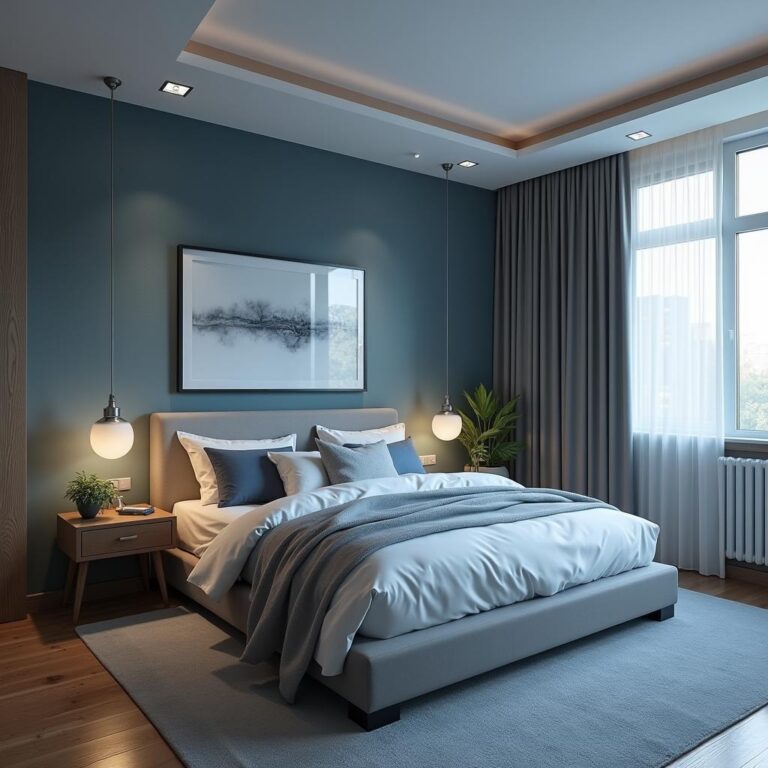Getting a good night’s sleep is essential for both physical and mental health. One of the most crucial factors that can significantly affect the quality of your sleep is the temperature of your sleeping environment. In this article, we’ll explore the best room temperature for deep sleep and provide you with tips on how to optimize your bedroom for restorative rest.
Why Room Temperature Matters for Sleep
The body has a natural sleep-wake cycle known as the circadian rhythm. This rhythm is influenced by various factors, including light, activity levels, and temperature. During sleep, the body’s core temperature naturally decreases, reaching its lowest point during deep sleep. Therefore, the temperature of your environment can either support this process or hinder it.
The Ideal Room Temperature for Deep Sleep
Research suggests that the optimal room temperature for deep sleep generally ranges between 60°F to 67°F (15°C to 19°C). This range helps facilitate the body’s natural cooling process and promotes uninterrupted, deep sleep cycles.
- **60°F to 67°F (15°C to 19°C)**: This temperature range is recommended by sleep experts and is considered suitable for most individuals.
- **A Cooler Environment**: A slightly cooler room can aid in falling asleep faster and staying asleep longer.
Effects of Temperature on Sleep Quality
Inadequate temperatures can lead to disrupted sleep cycles, frequent awakenings, and lower overall sleep quality. Here are some consequences of temperatures that are too high or too low:
- **Too Hot**: An overheated room can cause discomfort, excessive sweating, and restlessness. It might lead to lighter sleep stages, preventing you from entering the deep sleep phase.
- **Too Cold**: Conversely, sleeping in an excessively cold room can result in difficulty falling asleep and may wake you up from sleep as your body’s natural response is to warm up, disrupting your rest.
How to Maintain the Ideal Room Temperature
Maintaining your bedroom temperature within the preferred range requires some adjustments and considerations. Here are practical tips to help you achieve this:
1. Use a Programmable Thermostat
Installing a programmable thermostat allows you to set the temperature to lower at night and return to a warmer setting in the morning. This approach automates the changes according to your sleeping schedule.
2. Invest in Quality Bedding
The type of bedding you use plays a significant role in temperature regulation. Opt for breathable, moisture-wicking materials, such as cotton or bamboo, which promote airflow and keep you cool.
3. Select the Right Mattress
Some mattresses retain heat more than others. Consider investing in a gel-infused memory foam mattress, which can provide better temperature regulation while still offering comfort and support.
4. Use Fans or Air Conditioning
Using a fan or air conditioning can help stabilize the room temperature. A fan also circulates air, which can enhance comfort and improve sleep quality.
5. Keep Windows Covered
In warmer months, it’s essential to keep your windows covered with blackout curtains or shades during the daytime. This will block out sunlight and prevent your room from becoming too hot.
Personalize Your Sleep Environment
Everyone’s comfort level varies, so while the optimal room temperature for deep sleep is generally between 60°F and 67°F, personal adjustments may be necessary. Here are some ways to personalize your sleep environment:
1. Experiment with Clothing
Your choice of sleepwear can greatly affect how you feel while sleeping. Consider wearing lighter, breathable fabrics that promote ventilation. Test different clothing styles to find what works best for you.
2. Evaluate Humidity Levels
Humidity can also impact how temperature feels in your environment. An ideal humidity level is around 30-50%. If you find your bedroom too humid, consider using a dehumidifier; alternatively, a humidifier may be beneficial in dry environments.
3. Create a Relaxing Atmosphere
While temperature is critical, additional environmental factors can enhance your sleep experience. Dim the lights, minimize noise, and remove electronic devices to create a sanctuary conducive to sleep.
Monitor Your Sleep Patterns
Paying attention to how different temperatures affect your sleep can be helpful in finding your ideal environment. Consider keeping a sleep journal to track how various adjustments impact your nighttime rest.
Conclusion
Achieving deep sleep is a multifaceted process that can be significantly influenced by room temperature. The best room temperature for deep sleep is generally between 60°F to 67°F (15°C to 19°C). By making targeted adjustments based on personal preferences, individual needs, and environmental conditions, you can create the ideal atmosphere for restful sleep. Prioritize your sleep hygiene and invest the time in optimizing your sleep environment to unlock the restorative benefits of deep sleep for better health and wellbeing.







